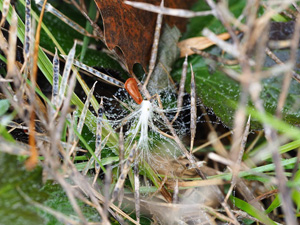1. Maple tree in the winter
There isn’t much to look at in Minnesota in the winter, but here is a slightly colourful, etched maple tree covered with moss and lichen; and a close-up of the riotous shapes and colors of the lichen. What is lichen, anyway? Why the different colours? Why is some pancake-shaped, and some frond-like? And why does lichen look the least bit alive in January in Minnesota? It’s almost enough to make you read a book about lichen (which I did during a brief New Year’s vacation).

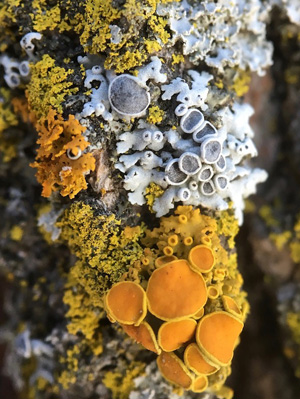
2. Twelve-spotted skimmer
I have seen at least twenty-five varieties of dragonflies in my front yard in the summer; one of the first to emerge are the twelve-spotted skimmers. Dragonflies are fascinating in many ways, but what inspired Louis Tiffany’s work in stained glass was the artistry of the wing — the strong strutwork, the delicate panels, the varied colours, shown in the closeup.
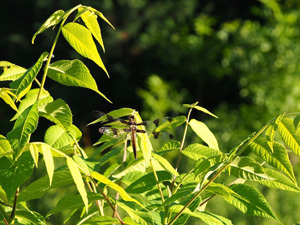
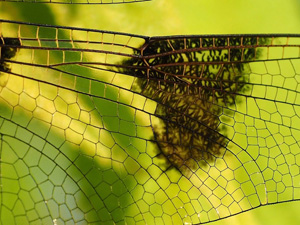
3. Wildflower garden
There is something relaxing and natural and very alive about an exuberant wildflower garden — including a sweat bee couple ensuring the next generation of sweat bees. Now I know the difference between the wing position and eye shape and colour of male and female sweat bees, and how, when, and camouflaged on what colour of flower they mate.
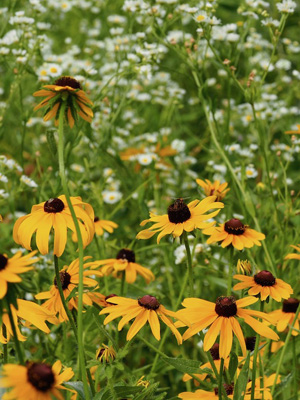

4. Young Green Darner
This young Green Darner may be greeting her first sunrise, and she must be exhausted from the rigours of climbing out of her larval state in the pond down the road, finding herself with — what are these things? Wings? What are they for? — and flying the short distance to my field, that she didn’t even notice or care when a mosquito landed on her eye. The mosquito must likewise not have been fully awake, as it ignored me. It found the eye to be slippery, and soon slid off. I am led to believe that dragonflies generally eat mosquitoes, but not this morning.


5. The nest of the bald-faced hornet
Walking down the driveway I spied this frighteningly large wasp nest (turns out they are not wasps; they are called hornets, but are really white and black [yellow]jackets) constructed sturdily over and around the branches of a red cedar, better than Frank Lloyd Wright could do. And then I (bravely) looked at it more closely and saw a gorgeous paper tapestry, I assume due to different workers laying down delicate strands of whatever twig-saliva compound they have each prepared. I was amazed.
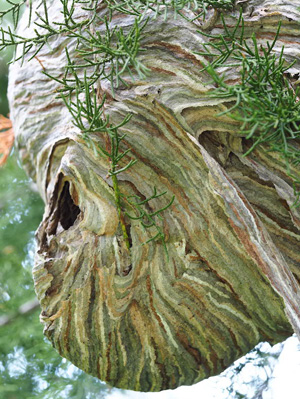
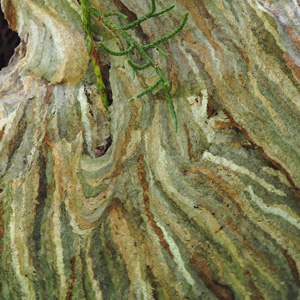
6. Monarch and milkweed
We are on the monarch summer throughway; we watch them drink from milkweed flowers in the summer, and smile when, in the fall, the milkweed seed flies away and lands at its new destination.

